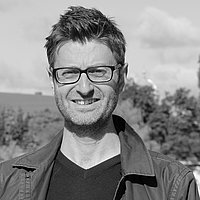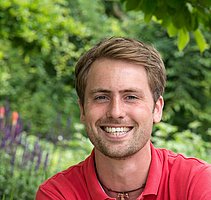There’s a cable car parked in the middle of a room, and a wall covered with radios. Switches, electricity generators and coils? There are so many of them that one expects Nikola Tesla to appear every second. Then, nearby a generator, there’s a table with colored chemical solutions. And in another room appear huge modules, similar to oversized overnight bags wide-open, portraying persons in space suits and explaining about chemistry in solution. Such a striking combination of physics and chemistry got the visitors’ attention at the Museum ‘Strom & Leben’ in Recklinghausen on the 6th of November. It was the inauguration day of the Solvation Science exhibition ‘Völlig losgelöst’, taking a first detour since its launch in the Blue Square in Bochum at the beginning of 2016.
“It’s wonderful news that this itinerant exhibition has finally hit the road. Scientific research is an exploratory expedition in the unknown, but the trip itself should not remain undisclosed to the public”, said at the opening Katrin Sommer, Professor for „Didaktik der Chemie” at RUB and one of the designers of the exhibition.
But what do solvation science and electricity have in common? As the museum’s director Hanswalter Dobbelmann pointed out, “there is indeed a strong historic connection between chemistry and electricity. For example, the discovery of electricity dates back to the first attempts with chemical batteries made by Volta and Galvani.” But the links between chemistry and electricity are not only a thing of the past: “Solvation science is much important for current topics like energy storage”, said Prof. Dr. Havenith, speaker of the Cluster of Excellence RESOLV, “therefore, we currently witness increasing research on solvents used in energy storage media, with the aim to improve their efficiency as well as their safety”.
Under these premises, ‘Völlig losgelöst’ will occupy a well-deserved spot in the ‘Strom & Leben’ museum in Rechklinghausen until Spring 2017. Besides presenting the actors and the themes of the RESOLV cluster, the exhibition will offer visitors the possibility to perform small experiments related to solvation science. School classes from the 3rd to the 5th year have also the possibility to book a special experimental program and to dive for two hours into the world of solvents. In the end, as Dobbelmann, Havenith and Sommer hope, by showing the scientists’ journey through a new research expedition, ‘Völlig losgelöst’ might well electrify the young generations to hit the same road in the future.
————————————————————————————————————————————
About the authors






